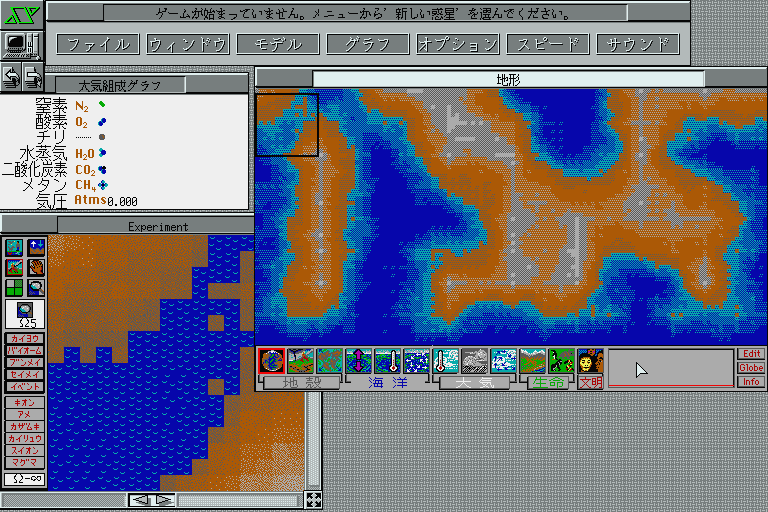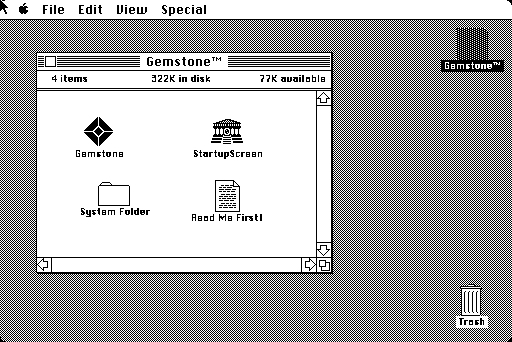

- #Simearth 68k mac emulator install
- #Simearth 68k mac emulator full
- #Simearth 68k mac emulator code
- #Simearth 68k mac emulator license
- #Simearth 68k mac emulator windows
This should boot from the CD-ROM, and take us into the Windows 98 installer. Because we executed qemu from the same directory we created our virtual hard disk ("virtual_hard_drive.img") in, we didn't need to specify a path. Finally, we specified the path to our virtual hard disk. If you do not specify this option, the emulated system will attempt to boot from the virtual hard disk. "-boot d" tells the emulated system to boot from the CD-ROM drive (or the. We launched the default qemu system (x86), and told it to use our computer's first CD-ROM drive as the guest OS's CD-ROM drive. Qemu -cdrom /dev/acd0 -boot d virtual_hard_drive.img &
#Simearth 68k mac emulator install
Insert your install CD, then, assuming it is an ISO9660 CD (most are, unless this is an Apple CD-ROM), mount it: I tested this with an old copy of Windows 98 that I had laying around. Now that we have a virtual hard disk image, we have to install a guest OS. Note that the image will not actually take up 3 GB-it will grow as the guest OS needs it. This will create a Qemu formatted virtual hard drive image with a capacity of 3 GB named "virtual_hard_drive.img" in the current directory.

Qemu-img create -f qcow virtual_hard_drive.img 3G To create a new virtual hard drive image, as user, type To automatically load the kqemu kernel module every time your system starts up, add the following line to /boot/nf: We then need to load the kqemu kernel module: Optionally, if you want to build qemu with the qemu-accelerator kernel module, which will drastically increase qemu's performance in terms of x86-on-x86 emulation (if not, skip ahead): Its most popular (and well-developed) use is, however, decidedly x86 emulation. Adding switches to force a particular chipset is another idea.Qemu is a powerful computer processor emulator that can be used to emulate x86, Sparc, and PowerPC processors, among others. This way the program does not have to be recompiled to add or remove support for a particular chipset. Perhaps an improvement to Throttle would be to put the database in a configuration file. I disabled cache and set the multiplier to the lowest possible value: Windows 98 looked like it was running on a slow 486. HWiNFO reports the new clock speed, and disabling cache noticeably affects performance. I did happen to play with it in a Win98 DOS box, and the cache disabling and multiplier setting worked properly. Oh one more thing, could you try it on Win98 DOS box please? Just like to see any issues in protected mode. Practically though I don't think a lot of people will be needing it, especially judging from the lackluster response to this utility 🤣. It's about a week of coding & testing needed I guess, and looks like it will be fun. If I were to do it, probably won't just copy his work, but will definitely use it as reference. Rather than reinventing the wheel, maybe you can get Jeff's permission to use some of his work in your project.
#Simearth 68k mac emulator license
This may be a long shot: Throttle's source is open, but I don't see a formal license anywhere. The DOOM realticks are measured using Phil's Computer Lab Dosbench utility: "Doom max details" I tested in Windows 98 by restarting in MS-DOS mode. I do not have a great way to capture screenshots, so after testing, I redid the tests redirecting cpuspd output to text files. Please note that for 3 & 4 the commands have 2 "i"s, first one to show the initial frequency and second one to show the frequency after multiplier change. I should be able to post some results by tomorrow.

I have some time today for retro shenanigans. Please report back the results, best if you could attached a screenshot. Cache and throttle - issue command: Cpuspd i cd t4 i (no reasons why they won't work but just in case) Set multiplier - issue command: Cpuspd d i m5.0 i (please substitute multiplier as you wish)Ĥ. Show current multiplier - issue command: Cpuspd d mģ. Cpu detection - issue command: Cpuspd d iĢ.
#Simearth 68k mac emulator code
The code is completely untested though (as I do not have any C3 cpus), and I expect there will be tons of bugs. I've added cpu detection and multiplier functionalities for VIA C3, with support for Samuel, Samuel 2, Erza, Erza-T, and Nehemiah.

#Simearth 68k mac emulator full
Show full and anyone who has VIA C3 and is willing to help out with the testing: Kalohimal wrote on, 15:08: and anyone who has VIA C3 and is willing to help out with the testing:


 0 kommentar(er)
0 kommentar(er)
